Resources

There’s a term for the anxiety many novice instructors feel about the online teaching-learning environment. It’s called “transactional distance.” This relates to the dissonance of feeling “distant” or disconnected from students when one is used to only the experience of the face-to-face classroom experience. Tisha Bender, in Discussion-Based Online Teaching To Enhance Student Learning (Stylus, 2013), identified the pedagogical components that can mitigate the discomfort of transactional distance (something that potentially affects both teacher and student online). Interestingly, but not surprising, they are the same things that are applicable in the classroom learning environment. Arguably there is as much, if not more, transactional distance in a traditional classroom experience as there is online. I've done classroom observations where I witnessed over half of the students spending most of their time on Facebook, Instagram, and shopping sites while an oblivious professor lectured on. Here are the things we know enhances student learning: For the student: Experiencing a sense of belonging Having a safe place where they can risk learning Having the opportunity to learn from others Feeling self-motivated to learn Receiving feedback from the instructor Understanding and feeling comfortable in the social environment of the learning context. For the instructor: Practicing hospitality in the learning environment Providing a place where respect and affirmation of others' opinion is affirmed Providing opportunities for collaborative learning Giving feedback Creating the conditions for learning (interest, curiosity, challenge, and meeting student needs) Understanding and managing the social environment of the learning context (classroom or online). All that to say, one way to overcome anxiety about transactional distance is to remember: • Learning is learning, in whatever context • Learning is a social phenomenon; pay attention to the important “non-instructional” dynamics of the learning environment and experience • It is the application of sound pedagogy that makes the difference in the effectiveness of learning (context and modes are secondary) • The context of learning matters, but no context is perfect and learners have great capacity for being resilient when it comes to contexts of learning • Pedagogically sound course design can mitigate the challenges of the online environment that create transactional distance • The role of the instructor is critical to effective learning. The two absolutely necessary components for successful online learning are: (1) teacher engagement, and (2) student participation. Whether you teach in the traditional classroom environment, design a hybrid course, or facilitate an online learning experience, how well are you paying attention to transactional factors for successful learning?
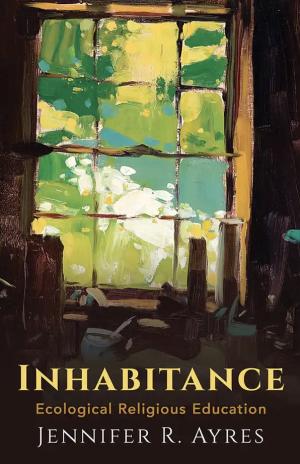
Like other creatures, human beings are inhabitants of their ecosystems. But are humans good inhabitants? According to Jennifer Ayres, the way of inhabitance is stubbornly elusive. The work of understanding, loving, and tending God’s world is constrained by patterns of alienation, exploitation, and systemic neglect and injustice. Faced daily by evidence of ecological death and decay, Ayres determines that this important work of inhabitance is constantly threatened by ecological despair. Ecological despair stems from alienation from the natural world, acute and generational grief resulting from loss of home places, and, for many, an overwhelming guilt at having been complicit in the planet’s suffering. In Inhabitance: Ecological Religious Education, Ayres proposes a solution to this increasing alienation: the way of inhabitance. Just as other animals live and thrive within their ecosystems, so do humans live in a habitat created, sustained, and loved by God. This God perpetually invites us to become better inhabitants. Many religious communities already cultivate inhabitance as a way of life, work that they consider to be central to their deepest theological commitments. Inhabitance examines a diverse array of such practices that foster more intentional engagement with the particular places in which people live. Ecological religious education, Ayres demonstrates, nurtures a disposition of loving commitment toward God’s creation. Inhabitance demands a willingness to love other beings and a willingness to courageously encounter the human and ecological suffering of the world and be fully present to that suffering. And even as humans live more lovingly, courageously, and attentively within their particular places, their lives are opened up to the deepest sources of human well-being—for when God’s world around us flourishes, so do we. (From the Publisher)
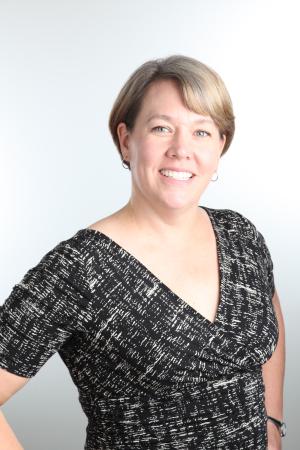
Recently, I worked with a colleague to conduct student surveys with currently enrolled students and alumni from the first decade of our distance MDiv program. We asked students what they would like our faculty to know about their teaching strategies for the online portions of classes. About two-thirds of respondents mentioned a desire for increased faculty presence and investment in the course. In some cases, these were very strongly worded: “Faculty participation and engagement online is a make or break factor for the class.” “Beyond a reasonably well-designed course, the instructor(s) showing they are present and attentive is the most important aspect.” “And seriously folks, just because the coursework is online is no excuse for the instructor to not be present in the class . . . . Be present with us. Respond to our posts as if you were responding to our embodied voice breathing the same air at the same time. Don't make us self-teach ourselves with your materials and not with your experience/presence.” Now, faculty responses to this data were mixed. Rightfully so, they felt that in the structuring of the class, the selection of materials to engage, the formation of discussion questions, responding to student posts, providing instructions for written assignments, and numerous other ways, they were regularly “in” their classes. But all of this work that the faculty member put into designing and implementing the course did not always equate to the student’s sense that faculty were present in real time, invested in student learning, and cared for them as people. And for most of our students, this social presence was the most critical factor for good online teaching. Faculty simply weren’t perceived by students as “being there” when they were present in textual form. And, here I am stretching a bit beyond my data, but I believe students often experience textual communication from faculty as evaluative, directive, and disembodied. In creative nonfiction and memoir genres many writers can make themselves socially present through the written word. But, this feat takes a different kind of writing than most faculty are trained to do. The ways we are trained to write as academics tend to communicate a distant expert, a not-so-humanizing aspect of our teaching selves. One nearly effortless way for faculty to make themselves more socially present in an online course is by creating a kind of connective tissue throughout the class in the use of short, informal videos. As a teaching coach to online faculty, I was initially pretty anti-video. I worried that talking head videos were just a non-dialogical information dump, either through reading written lectures to present content or worse, recording lectures in a residential class and using them later for an online section. These were not the kinds of videos our students desired. The videos that the students felt created social presence often involved faculty just hitting record on their laptop and chatting in real time. Faculty were using these videos to share weekly updates about how the class was going, to give brief lecturettes to help students navigate difficult material, to provide a frame for the topic of the week and identify its importance, to offer introductions to readings or other course materials, and to coach for success on writing assignments. While it feels awkward to stare meaningfully into the top of your computer screen and speak directly to students, these videos presenced faculty in a very different way than either voice recording or textual communication. Students felt more connected to those faculty who used these short, informal videos. Most of the time, these videos contained the kind of offhanded explanatory speaking that you might do in the first and last five minutes of class, when you present an assignment, or in response to student questions. Our students marked the importance of these video appearances in their sense of having access to and benefitting from the expertise of the professor, establishing a relationship and sense of trust in the professor, helping with course integration, and believing that the professor was actively guiding the course. Of course, their power to invoke the presence and care of the faculty diminished when the videos were obviously designed for an earlier class, which makes me regret my choice to ever change my hair length and style. Professionally staged or highly polished videos also reduce the communication of a caring human presence. Sitting in the office speaking into a phone camera may feel like a ridiculous way to connect with students, but it turns out that the vulnerability of offering your regular teacher-self helps you be present to your students in powerful ways.
This podcast, hosted by Bonni Stachowiak, airs weekly. The podcast focuses on topics such as excellence in teaching, instructional design, open education, diversity and inclusion, productivity, creativity in teaching, educational technology, and blended learning.
Podcast Series. A podcast for people who know religion is weird, but love it anyway. Your hosts, Leah Payne and Brian Doak, are both professors, authors, and pop culture aficionados, whose interests range from archaeology and history and linguistics to LARPing and The Walking Dead. Episodes tackle some piece of media highlighting the wonderful weirdness of religious experience—a documentary, a television show, a Twitter scandal—and use that as a thread on which to hang pearly reflections on a wide variety of topics. Heaven. Hell. The perils of fame within the evangelical world. Church attendance. Atheism. Gamer communities. Starting a cult. Join us.
A 2019 course by Jacob J. Erickson at Trinity College Dublin explores "contemporary theological and ethical perspectives on eating and drinking: from food systems to vegetarianism to scarcity and more. How might contemporary ethics shape and be shaped by what we eat or drink, how we eat or drink?"
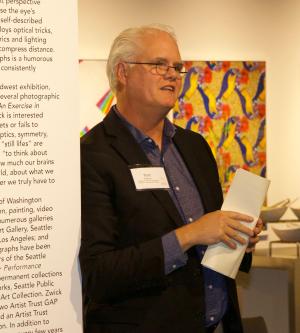
You may have heard the announcements that the Wabash Center has launched a new open-access, online journal, The Wabash Center Journal on Teaching. The entire contents of the inaugural issue of the journal is now available for free download online. For twenty-two years the Wabash Center has been publishing Teaching Theology & Religion (TTR), owned by Wiley-Blackwell. Now we’ve moved our whole editorial team from TTR to this new publishing venture in order to make our efforts available digitally without subscription. Although the Wabash Center will no longer be involved in the publication of TTR, Wiley-Blackwell intends to continue publishing it with a new editorial team beginning with volume 23 (January 2020). When we started TTR as a new and unknown center for teaching in the 1990s, we needed the prestige of a major publisher in the field of religion and theology to lend gravitas to the emerging field of the scholarship of teaching and learning. But for many years now we have regretted the paywall our articles have lived behind, limiting our ability to promote this scholarship, support authors, and inspire readers. The Wabash Center Journal on Teaching will continue publishing the high-quality, peer reviewed scholarship on teaching in the fields of theological and religious studies that has been the hallmark of TTR for over two decades. The new journal carries forward the same scope and focus of scholarship – but now our efforts will be freely available online. In the new journal you’ll find the popular Teaching Tactics. In addition to Forums (with contributions now listed individually) we will also highlight Special Topic sections. And the new journal reintroduces Book Reviews, which were removed from TTR in 2015 to allow more space for articles in the print journal. So while you’ll find The Wabash Center Journal on Teaching familiar, you will also begin to notice new developments. The open-access online platform allows us to provide convenient links to sources on the internet and links back to previously published articles. But more than that, the new platform provides the opportunity for The Wabash Center Journal on Teaching to become more than just a print journal available online. It’s easy to insert links to video clips, graphics, or sound files – although these links must be found on the web or created by authors. It takes a leap of imagination to conceive how teaching issues and contexts, arguments and evidence, could be represented graphically, in motion, visually. Until now, the written word would have seemed to be the distinctive home for sustained rigorous, reflection on teaching. But we’re moving into a new world in which the “text” that creates and makes legible academic thinking needn’t be limited to words on a page. So we issue this challenge to our readers and authors: send us sustained critical reflection on your teaching practice and context that explores the boundaries and possibilities of representational forms and genres available on an open-access online platform. 4 Highlights of the Inaugural Journal Issue 1. “State of the Field” essays by: Frank M. Yamada Eugene V. Gallagher and Joanne Maquire A Conversation with Maryellen Weimer (longtime editor of The Teaching Professor, and leading authority on disciplinary based scholarship on teaching) 2. Reflections on the teaching legacy of Dr. Katie Geneva Cannon by several of her former students: Stacey M. Floyd-Thomas Karen K. Seat Miguel A. De La Torre Angela D. Sims Edwin David Aponte 3. Special Topic: Threshold Concepts in Biblical Studies (with contributions from John Van Maaren, Tat-siong Benny Liew, Richard A. Ascough, and Jocelyn McWhirter) 4. Teaching Tactics Zoom in on Interpretive Skills by, Amy Beth Jones, Stephanie Day Powell The Buddha's Positionality, by Christina Anne Kilby Maximizing Engagement between Online and On-Campus Students Via Zoom, by Daniel Orlando Álvarez Does This Sound Religious?, by Amy DeRogatis, Isaac Weiner
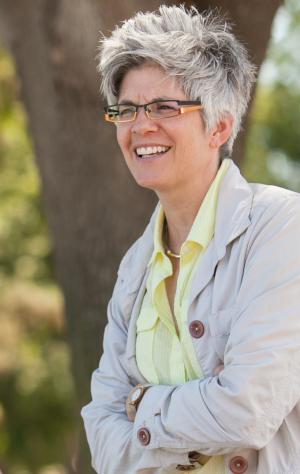
Some things are best expressed digitally. When the Wabash Center's "Teaching with Digital Media" Workshop challenged my preoccupation with using text to explain visual concepts, I decided to create a video rather than typing a "Dos and Don'ts" list for students in preaching courses. With the help of two savvy graduate assistants, we produced this VLOG. Spoiler alert: everyone survives!
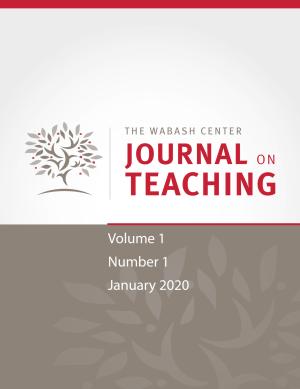
Katie Geneva Cannon equipped generations of students with analytical tools to reckon with the past and present and to creatively construct previously unimaginable futures. Her body of work teaches us to find new paths as we critically plumb our own historically situated epistemologies and put them in conversation with a variety of traditions. As my teacher, dissertation advisor, and mentor during my graduate studies in religion at Temple University from 1993-2000, Dr. Cannon taught me to examine rigorously my own story in its larger historical and geopolitical contexts, to parse the privileges and perils of pursuing the academic study of religion as a white woman, and to engage deeply with multitudinous ways of knowing. See companion contributions to this Forum written by Edwin David Aponte, Miguel A. De La Torre, Stacey M. Floyd-Thomas, and Angela D. Sims.